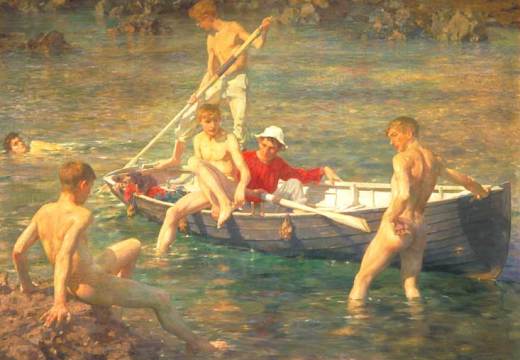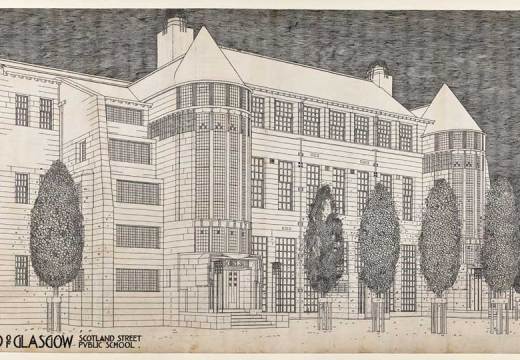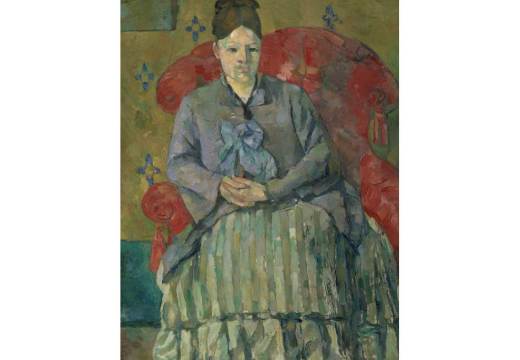‘Last year I think we were a bit overambitious, because we tried to include all these different things,’ says Adélia Sabatini of the inaugural View Festival of Art History. Joséphine Seblon nods in agreement, but they both know that the impressively eclectic programme of talks and events they put together last February for the Institut français (which covered a huge range of topics, from private collecting to notions of national identity) was nonetheless a great success. Britain had never played host to an art history festival before, and, if the visitor numbers are anything to go by, the nation’s art-lovers were ready for one. Soon, View part two will open its doors. ‘We hope it wasn’t just a novelty thing,’ Sabatini admits as we discuss the upcoming event, ‘and that they [the public] are going to show up again.’
This year’s festival (which runs from Friday to Sunday) is really no less ambitious than the first – but it is more structured. Sabatini and Seblon have picked three overarching themes (Preserving & Restoring; Avant-Gardes and Precursors; and Defining Civilisations) and commissioned events around them, to both renew and refine the programme. They’ve also simplified the schedule: debates, conversations and short talks will be held at the Institute on Friday and Saturday, while guided tours to the festival’s partner museums are all on Sunday.
They may be nudged into thematic groups, but the individual sessions are still enjoyably idiosyncratic, and there’s a touch of anarchy to the scattered timetabling. If you were to hang around in the Institute’s Médiathèque after lunch on Saturday, for example, you could hear about Sonia Delaunay & the European Avant-Garde before learning whether Viking culture contributed to civilisation. A series of student presentations, which don’t conform to the three main themes, throws some unexpected curveballs: if ‘The Spirit of Versailles’ from the Preserving & Restoring set doesn’t tempt you at 12.45pm, you could try ‘The Tales of the Killer Rabbit’ by Maximilien Theinhardt from the École du Louvre instead. ‘We got some amazing submissions,’ Adélia tells me. ‘Really fun – kind of unexpected.’
Last year the student presentations were tucked into a rather inaccessible corner of the Institute, thanks to some ill-timed renovation works, but this year they will have equal billing to the rest. They’ll be in good company: View 2015 features museum directors including Emilie Gordenker, Iwona Blazwick and Laurent Le Bon, art historians such as John-Paul Stonard and Ben Street, the journalist Georgina Adams, and artist Jeremy Deller, as well as a host of other respected conservators, curators, academics and writers from across Europe. The calibre of its participants is surely one of the festival’s biggest draws. It’s rare to see so many high-profile speakers under one roof, particularly for an event aimed at a non-specialist audience. ‘Last year we had Jean Michel Massing from Cambridge give a talk – quite specialist – on authenticity in African art,’ Adélia recalls. ‘It was full, and he came to me afterwards and was like “that was amazing, no one was taking notes! They weren’t just here because they’re doing a PhD on it.”’
Sabatini and Seblon have also convinced major museums to get involved: ‘This year we’re working with Tate Modern for the first time, and the Science Museum is opening up its storage rooms, which hold thousands of little items that nobody ever gets to see.’ Sir John Soane’s Museum, Leighton House, and Strawberry Hill are also newly on board. Ten museums in total will host special talks or tours – part of the festival effort to get people not just talking about art, but actually in front of it.
‘Our core mission’, Adélia tells me, ‘is to set up a dialogue’. Given that the festival is hosted by the Insitut français, and backed by the likes of the Goethe Institut, Italian Cultural Institute, and the European Commission, that dialogue is distinctly international. ‘Last year we had really brilliant French art historians meeting English art historians, but their books are not actually published in each other’s countries’, Joséphine notes. Potential conversations and academic collaborations are easily lost in translation, ‘unless you put people into the same room.’
For those who can’t be in the room, the full programme of talks will be recorded and eventually uploaded online. Sabatini and Seblon hope this might be ready – along with last year’s content, which hasn’t made it up yet – by March (‘We didn’t actually get to see anything last year because we were running around the whole time. So it’s good for us!’)
But a recording can’t quite capture the energy and buzz the event managed to conjure in South Kensington last year, and hopefully will achieve again. If you do happen to be in London this weekend, make sure you check the programme.
‘View: A Festival of Art History’ is at the Institut français du Royaume-Uni, London, from 27 February–1 March. Apollo editor Thomas Marks will chair the debate below on Saturday 28 February:
Can art history help define civilisations?
A debate with Marina Warner (Mythographer), Zeev Gourarier (Scientific Director, MuCEM) and Yves Le Fur (Director of Collections and Heritage, Musée du Quai Branly), moderated by Thomas Marks (Editor, Apollo).
Click here for the full programme.
Related Articles
The changing state of conservation: Katy Barrett’s response to View Festival 2015
Great View: the UK’s first art history festival (Digby Warde-Aldam)















![Masterpiece [Re]discovery 2022. Photo: Ben Fisher Photography, courtesy of Masterpiece London](http://zephr.apollo-magazine.com/wp-content/uploads/2022/07/MPL2022_4263.jpg)
‘Like landscape, his objects seem to breathe’: Gordon Baldwin (1932–2025)